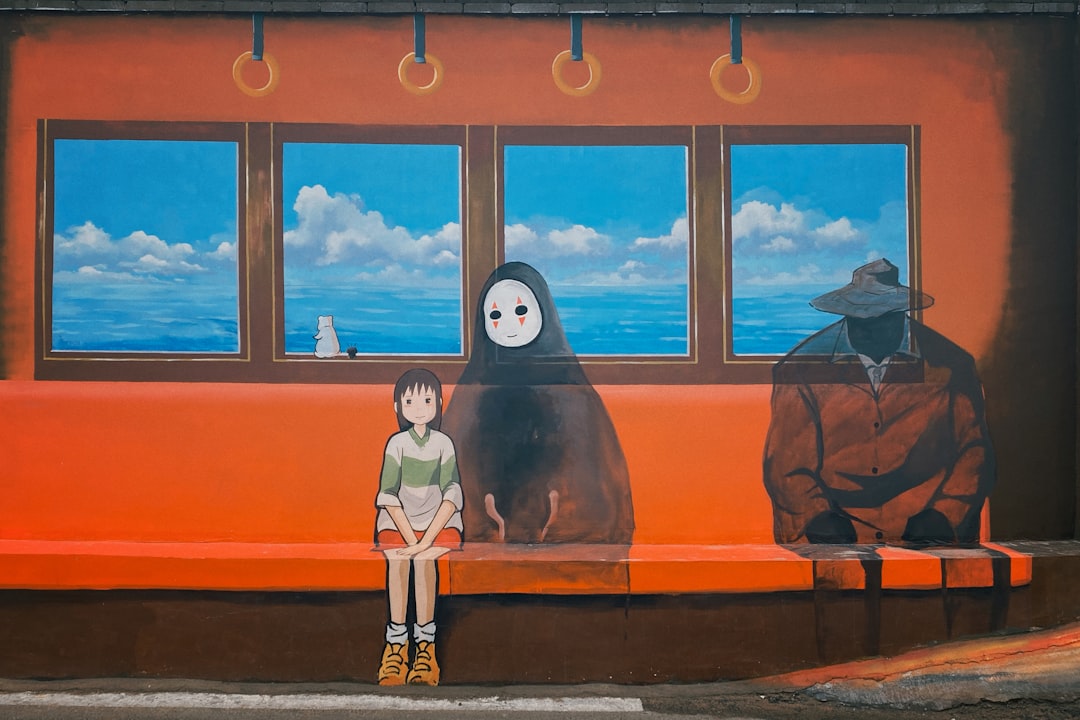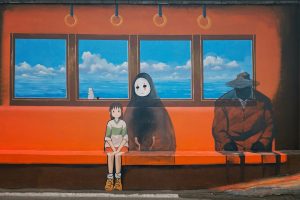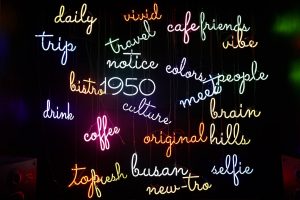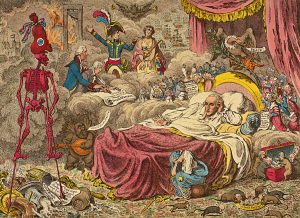China Embraces AI for Film Adaptations: Could Labubu Be Next…
Discover how China is revolutionizing film adaptations with AI. Explore if Labubu is next in line. Dive into the future of animation today!
Introduction to AI in Film Animation
The Rise of AI in Animation
In recent years, artificial intelligence has begun to revolutionize the film industry, particularly in the realm of animation. AI technologies are being used to streamline the animation process, reduce costs, and enhance creative possibilities.
By automating labor-intensive tasks, AI enables animators to focus more on storytelling and artistic expression.
China’s Pioneering Efforts
China has emerged as a leader in the application of AI to film animation. The country’s rapid technological advancements and significant investments in AI research have positioned it at the forefront of this innovative field.
Chinese studios are increasingly leveraging AI to produce high-quality animations more efficiently, setting new standards in the industry.
Potential Impact on Film Adaptations
The use of AI in film adaptations is particularly promising. AI can analyze source material, such as books or comics, to generate preliminary animation sequences and character designs.
This capability accelerates the adaptation process and ensures that the final product remains faithful to the original material. As AI continues to evolve, its role in adapting complex narratives is expected to grow.
Is Labubu Next?
Given China’s advancements in AI animation, there is speculation about which projects might be next to benefit from this technology.
Labubu, a popular character from the Chinese designer toy brand Kasing Lung, could be a potential candidate for an AI-driven film adaptation. The character’s unique design and storytelling potential make it an ideal subject for an innovative animation approach.
If Labubu were to be animated using AI, it could set a new benchmark for how beloved characters are brought to life on screen.
The integration of AI could ensure that the animation captures the essence of Labubu while introducing novel visual and narrative elements.
China’s Adoption of AI in Film Industry
AI-Driven Animation Techniques
China’s film industry is witnessing a transformative shift with the integration of AI-driven animation techniques. These technologies are being used to streamline the animation process, reducing the time and cost involved in traditional animation.
AI tools can automate repetitive tasks, allowing animators to focus on more creative aspects of filmmaking. This has opened up new possibilities for producing high-quality animations at a faster pace.
Enhancing Visual Effects
AI is also playing a crucial role in enhancing visual effects in Chinese films.
By leveraging machine learning algorithms, filmmakers can create more realistic and intricate visual effects that were previously difficult to achieve. AI can analyze vast amounts of data to simulate natural phenomena, such as water, fire, and smoke, with a high degree of accuracy.
This capability is particularly beneficial for fantasy and science fiction genres, where visual effects are a key component.
Streamlining Production Processes
The adoption of AI in the film industry is not limited to animation and visual effects. AI is being used to streamline various production processes, including script analysis, casting, and even marketing strategies.
AI algorithms can analyze scripts to predict audience reactions and suggest improvements. In casting, AI can match actors with roles based on a range of factors, including past performances and audience preferences.
Potential Impact on Film Adaptations
With AI’s growing role in the film industry, there is potential for its use in film adaptations.
The question arises whether popular characters like Labubu could be next in line for AI-driven adaptations. AI can help bring beloved characters to life with greater fidelity to their original designs, ensuring that adaptations resonate with audiences.
This could lead to a new wave of adaptations that are both innovative and faithful to their source material.
Challenges and Considerations
Despite the advantages, the use of AI in filmmaking also presents challenges. There are concerns about the potential loss of jobs for traditional animators and the ethical implications of AI-generated content.
Additionally, ensuring that AI-generated animations maintain a human touch and creativity is crucial. As China continues to explore AI in its film industry, these considerations will be important in shaping its future direction.
Potential Impact on Labubu and Other Animated Characters
Revolutionizing Animation Production
The introduction of AI in animation production could significantly reduce the time and cost associated with bringing characters like Labubu to life.
Traditional animation methods are labor-intensive and require a large team of artists and animators. AI technology can streamline these processes by automating repetitive tasks, such as in-betweening and rendering, allowing for quicker production cycles.
For characters like Labubu, this means more frequent updates and content releases, as AI can help studios produce high-quality animations at a faster pace.
This could lead to a more dynamic and engaging experience for audiences, who can enjoy new adventures and stories more regularly.
Enhancing Creative Possibilities
AI technology offers new creative tools that can enhance the storytelling and visual appeal of animated characters. By using AI-driven techniques, animators can experiment with different styles and effects that were previously difficult or time-consuming to achieve.
This opens up new avenues for creative expression, allowing characters like Labubu to explore diverse narratives and artistic styles.
Additionally, AI can assist in generating unique character movements and expressions, adding depth and personality to animated figures. This can result in more relatable and emotionally engaging characters that resonate with audiences on a deeper level.
Challenges and Ethical Considerations
While AI presents numerous opportunities, it also introduces challenges and ethical considerations in the animation industry.
One concern is the potential loss of jobs for traditional animators as AI takes over certain roles. Studios must find a balance between leveraging AI technology and preserving human creativity and craftsmanship.
Moreover, there are ethical implications regarding the use of AI in creating animated content.
Questions about originality, authorship, and the potential for AI-generated characters to perpetuate stereotypes or biases need to be addressed. It is crucial for creators to use AI responsibly, ensuring that the technology is employed to enhance creativity rather than replace it.
Future Prospects for Labubu
As AI technology continues to evolve, the future prospects for Labubu and similar animated characters are promising.
AI can help expand the reach and popularity of these characters by enabling the creation of high-quality, engaging content that appeals to global audiences. This could lead to increased merchandising opportunities and cross-media collaborations, further cementing the characters’ presence in popular culture.
Ultimately, the integration of AI in animation holds the potential to transform how characters like Labubu are developed and experienced, offering exciting possibilities for both creators and audiences alike.
Future of AI in Film Adaptations
AI-Driven Animation Techniques
With the advent of AI technology, the film industry is witnessing a revolution in animation techniques.
AI algorithms can now analyze and replicate complex movements and expressions, allowing for more lifelike and dynamic animations. This technology is particularly beneficial for adapting stories that require intricate visual storytelling, such as those found in graphic novels and comics.
China’s recent use of AI to animate film adaptations demonstrates the potential for these technologies to streamline production processes.
By automating labor-intensive tasks, AI can significantly reduce the time and cost associated with traditional animation methods, enabling filmmakers to focus on creative aspects of storytelling.
Enhancing Creative Storytelling
AI’s role in film adaptations extends beyond animation. AI tools can assist in scriptwriting by analyzing vast datasets of successful narratives to suggest plot developments and character arcs.
This capability allows filmmakers to craft more engaging and resonant stories that align with audience preferences.
Furthermore, AI can help in visualizing complex scenes during the pre-production phase. By generating detailed storyboards and concept art, AI provides filmmakers with a clearer vision of the final product, ensuring that the adaptation remains true to the source material while exploring new creative possibilities.
Personalized Viewing Experiences
As AI continues to evolve, it holds the promise of creating personalized viewing experiences.
By analyzing viewer data, AI can tailor content recommendations and even adapt certain elements of a film to suit individual preferences. This level of personalization could revolutionize the way audiences engage with film adaptations, making each viewing experience unique.
In the context of popular adaptations like “Labubu,” AI could potentially allow for multiple versions of a film, each tailored to different audience segments.
This approach not only enhances viewer satisfaction but also expands the reach and impact of the adaptation across diverse demographics.
Challenges and Ethical Considerations
Despite the promising future of AI in film adaptations, several challenges and ethical considerations must be addressed. Concerns about job displacement in the animation industry and the potential loss of human creativity are paramount.
It is crucial for the industry to find a balance between leveraging AI’s capabilities and preserving the artistry and craftsmanship inherent in filmmaking.
Additionally, ethical questions surrounding data privacy and the use of AI-generated content must be carefully navigated. As AI becomes more integrated into the film adaptation process, establishing clear guidelines and regulations will be essential to ensure responsible and ethical use of technology.
FAQ
Q: What recent development has China made in the film industry regarding AI?
A: China has recently started using artificial intelligence to animate film adaptations. This innovative approach aims to enhance the efficiency and creativity in the animation process, potentially revolutionizing how animated films are produced in the country.
Q: How might AI impact the adaptation of popular characters like Labubu?
A: AI could significantly impact the adaptation of popular characters like Labubu by streamlining the animation process and allowing for more intricate and creative storytelling. With AI, animators can produce high-quality animations more quickly and at a lower cost, potentially leading to more frequent and diverse film adaptations of beloved characters.
Q: What are the potential benefits of using AI in film animation?
A: The potential benefits of using AI in film animation include increased production speed, reduced costs, and enhanced creativity. AI can automate repetitive tasks, allowing animators to focus on more complex and creative aspects of the animation process. Additionally, AI can help create more realistic and detailed animations, improving the overall quality of the films.
Takeaway
As we witness the exciting advancements in AI technology transforming the world of film adaptations, the possibilities for Labubu are endless. Stay tuned to see how this innovative approach could revolutionize the way we experience animated content. Follow our updates to be the first to discover the future of Labubu in the era of AI animation!











Comments